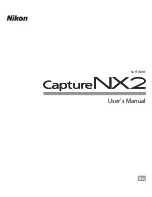
Glossary
©
National Instruments Corporation
G-3
cluster
A set of ordered, unindexed data elements of any data type including
numeric, Boolean, string, array, or cluster. The elements must be all
controls or all indicators.
coercion dot
A gray dot on a terminal to indicate that one of two terminals wired together
has been converted to match the data type representation of the other.
connector
Part of the VI or function node that contains its input and output terminals,
through which data passes to and from the node.
connector pane
Region in the upper right corner of a front panel window that displays the
VI terminal pattern. It underlies the icon pane.
constant
See universal constant and user-defined constant.
D
data flow
Programming system consisting of executable nodes in which nodes
execute only when they have received all required input data and produce
output automatically when they have executed.
deadband
In process instrumentation, the range through which an input signal can
vary, upon reversal of direction, without initiating an observable change in
output signal. Deadband is usually expressed in percent of range.
See log deadband and update deadband.
device
An instrument or controller that is addressable as a single entity and
controls or monitors real-world I/O points. A device is often connected to
the host computer through some type of communication network, or can be
a plug-in device.
device server
An application that communicates with and manages a peripheral hardware
device such as a Programmable Logic Control (PLC), remote I/O device or
plug-in device. Device servers pass tag values to the BridgeVIEW Engine
in real time.
discrete tag
A two-state (on/off) value representation of a connection to a real-world I/O
point. In BridgeVIEW, this type of tag can be either a one (TRUE) or a zero
(FALSE).
















































